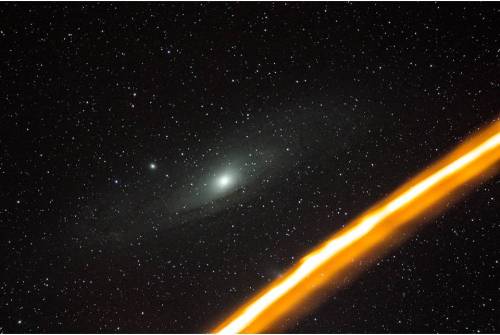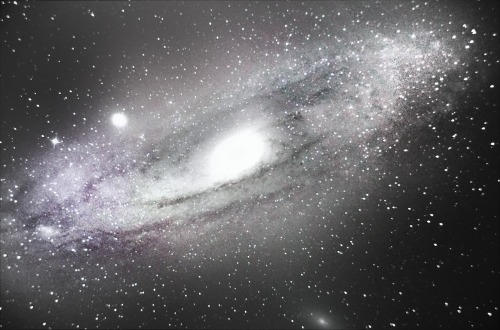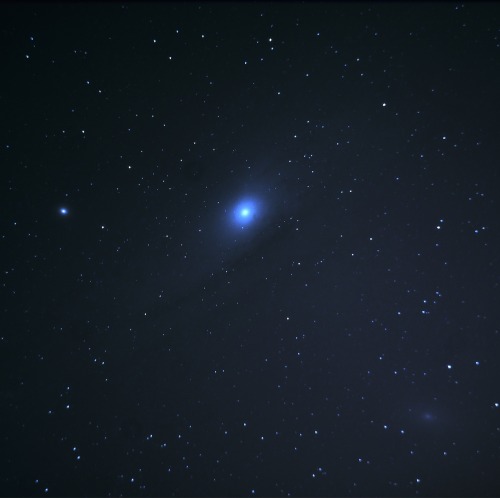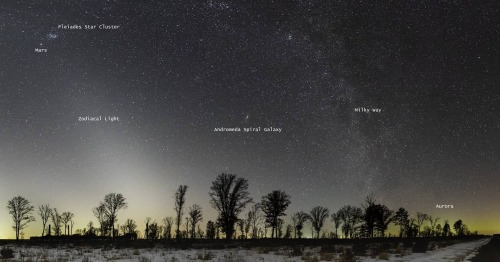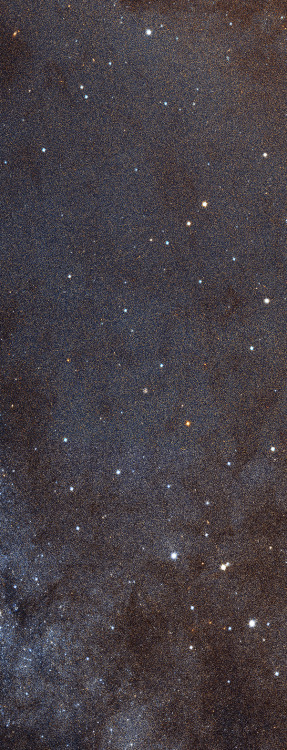#andromeda galaxy

Young blue stars circling the galactic center dominate the Andromeda Galaxy in this image taken in ultraviolet! About 2.5 million light-years away, the Andromeda Galaxy, also known as M31, really is our galactic neighbour. Spanning about 230,000 light-years, it took 11 different image fields from NASA’s Galaxy Evolution Explorer (GALEX) satellite telescope to produce this gorgeous portrait of the spiral galaxy in ultraviolet light in 2003. Its spiral arms stand out in visible light images, Andromeda’s arms are sites of intense star formation. They have been interpreted as evidence that Andromeda collided with its smaller neighboring elliptical galaxy M32 more than 200 million years ago. The Andromeda galaxy and our own comparable Milky Way galaxy are the most massive members of the Local Group of galaxies and are projected to collide in several billion years – perhaps around the time that our Sun’s atmosphere will expand to engulf the Earth.
Image Credit: NASA, JPL-Caltech, GALEX

James Webb Space Telescope. Credit: NASA/Chris Gunn
By Shardell Joseph
A team of NASA astronomers will observe dwarf galaxies and properties of dark matter using the newly completed James Webb Space Telescope. Fully assembled in late this year, the telescope was joined by two halves amounting to $9.7bln, and is scheduled to launch in March 2021.
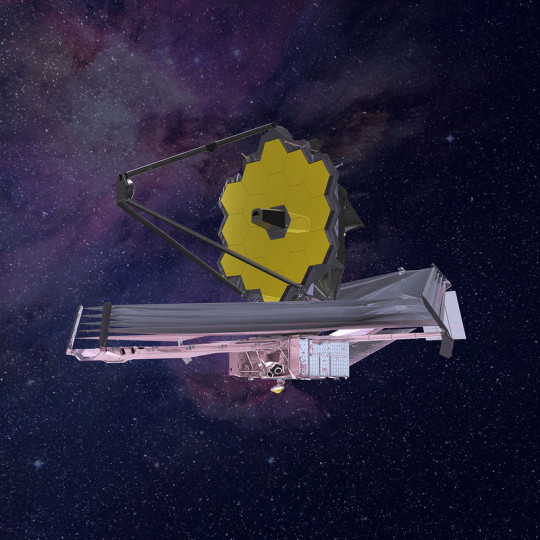
Artist conception of James Webb Space Telescope. credit: Northrop Grumman
‘The assembly of the telescope and its scientific instruments, sunshield and the spacecraft into one observatory represents an incredible achievement by the entire Webb team,’ NASA Goddard Space Flight Centre Webb Project Manager, Bill Ochs, said in a statement.
‘This milestone symbolises the efforts of thousands of dedicated individuals for over more than 20 years across NASA, the European Space Agency, the Canadian Space Agency, Northrop Grumman and the rest of our industrial and academic partners.’

Primary mirror segment testing. Credit: NASA/MSFC/David Higginbotham
The telescope will be used to conduct two separate studies – to observe dwarf galaxy companions to the Milky Way and the nearby Andromeda Galaxy. According to NASA, studying these small companions will help scientists learn about galaxy formation and properties of dark matter, which accounts for 85% of matter in the universe.
To observe these distant never-seen-before parts of the universe, the Webb observatory is equipped with an arsenal of revolutionary technologies. NASA claims it to be the most sophisticated and complex space science telescope ever created. Among the most challenging of these technologies is the five-layer sunshield, designed to protect the observatory’s mirrors and scientific instruments from light and heat, primarily from the Sun.

Webb Telescope Crew Flexes Robotic Arm at NASA. Credit: NASA/Chris Gunn
According to NASA, Webb has passed other deployment tests carried out during its construction. Technicians used gravity-offsetting pulleys and weights to simulate zero-gravity, which would be encountered in space. This deployment was carefully monitored, tensioning each individual layer, and technicians concluded that once in orbit, they will function flawlessly.
‘This test showed that the sunshield system survived spacecraft element environmental testing, and taught us about the interfaces and interactions between the telescope and sunshield parts of the observatory,“ said NASA Webb Telescope Sunshield Manager, James Cooper. ‘Many thanks to all the engineers and technicians for their perseverance, focus and countless hours of effort to achieve this milestone.’

The James Webb Space Telescope’s Sunshield Membrane. Credit: Northrop Grumman Aerospace Systems
Forboth programmes, the Webb telescope will be tested for its accuracy and precision. ‘It’s a very tricky situation, because basically what we want to measure are very tiny motions,’ explained co-investigator Andrea Bellini of STScI. ‘The accuracy we want to achieve is like measuring something that moves a few inches a year on the surface of the Moon, as seen from Earth.’
There is excitement around the development of the telescope as it will have the capacity to solve mysteries in our solar system, look beyond to distant worlds around other stars, and probe the mysterious structures and origins of our universe and our place in it.

Gold-coated Engineering Design Unit (EDU) Primary Mirror Segment. Credit: Drew Noel
Meteor trail on the background of the Andromeda Galaxy
Photo by astrophotographer: Charles Chiofar
Post link
With clear skies and a warm evening, I ran north for a night of shooting the night sky. My goal was to photograph the Zodiacal Light for the first time. I think with the dark skies outside of the city I actually captured it!? I took this pano from west to north and captured a number of other night sky targets, including some low-level aurora, which really kicked off a couple hours later.
Post link







First kiss
Upd: kiss in lips was a trigger for Rata because in the past he had been forced to kiss with Roang. She wanted him to taste her blood, so she bit her lips, paralysed Rata with magic and kissed him. It’s a long story…
You just scrolled over a high-res segment of the Andromeda galaxy. How does NASA get its photos to look so spectacular? The same way as everyone else.
Spoiler, it’s not an Instagram filter.
Wanna explore this amazing Andromeda picture a little more? Check this out:
Post link

